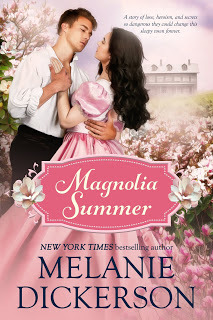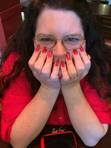Plotting is a Strange Animal
Melanie Dickerson here.One of the things I get asked about most often from young writers is plotting. Even though they may not know they’re asking me about plotting. For example, they may tell me that they have started a novel but they’re stuck and don’t know what to write next. Or they may ask me, “How do you finish a book? I always get about 50 pages into it and then I never seem to be able to finish.” And even more common is, “Where do you get your ideas?”
In these cases, the problem is usually that they don’t have enough plot. So if you know you need a plot, where can you get one? Or if you have a partial plot, where do you get the rest?
Plotting is a strange animal. Some of us outline meticulously, and others get a few vague ideas for a story and just start writing. But either way, you have to have a plot. So it’s important to know the basics of what makes up a good story. It’s important to know the essential elements. It’s important to read about how other writers come up with their plots. And it’s important to figure out what methods work best for you.
When a young writer asks me for advice, I will usually send them my list of writerly websites, with Seekerville and the Seekerville archives at the very top. I also give them a list of several books on writing for them to read, such as Plot and Structure by James Scott Bell and Writing the Breakout Novel by Donald Maass. This is what I did, I read how other writers do it. I tried to learn as much as I could about story and characterization and plot. And I went to workshops at conferences and took notes.
I have 15 published novels but I still like to get tips on plotting, even though I’m a pantser who hates outlining. I sometimes say I don’t do a whole lot of plotting, but that’s not really true. I have to plot. I just don’t like to plot in too much detail too far in advance. I’d rather plot as I go along and keep the ideas percolating in my head. But however you plot, it’s good to figure out what works best for you. And it’s also good to acquire some plotting tools.
One tool I’ve used with several of my books is Donald Maass’s Writing the Breakout Novel Workbook. It’s a fill-in-the-blank workbook that is a companion to the book by the same name. It can help you come up with ways to make your plot more interesting.
These days I have a Plotting Worksheet that I made for myself. I fill it out before I start writing. The first part is basically the GMC chart from Debra Dixon’s book Goal, Motivation, and Conflict, or GMC, which is a classic and should be read by every fiction writer. I focus on one of the main characters and I write down an external goal, a motivation for that goal, and the conflict for that goal. Then I do the same thing for the other main character. You might also find it helpful to write down the GMC for the villain as well, but you definitely should have one for the villain.
Missy has a great post about GMC here.
The rest of the worksheet are a series of blanks that I do for each of the main characters. These are mostly questions about the characters’ past, and I got these from a workshop taught by Susan May Warren and Rachel Hauck. (So I did actually go to at least one workshop while I was at a writers conference, instead of only socializing my friends!)
I would love to tell you all the questions I ask myself about my characters, but that would seem like I was giving away Susan May Warren and Rachel Hauck’s information, almost like plagiarism. So I suggest you check out their materials. Susan May Warren’swebsite has a section of her website Writing/Teaching, and you can explore there, but she also has a separate website here with her My Book Therapy information called Learn How to Write a Novel. She and her team have workshops that they teach, writerly services where they teach you one-on-one, and they have books. Some of their services are expensive, of course, since they’re teaching one-on-one and you’re getting their focused attention. So if you can’t afford that, don’t despair. I didn’t shell out a lot of money in the beginning, either. I read books from my library. I bought books on writing. And I read the great blogs out there that are chock full of free articles.
I will tell you some of the questions I ask about my characters. I try to come up with their greatest fear, the lie the heroine believes about herself, her biggest strength and her biggest flaw. Her deep wound she acquired from her childhood. If you can come up with this stuff about your characters, it will help you with plot, because plot and characterization go hand in hand. Think about it. If you know your character’s worst moment from their past, or their biggest fear, you can use that to create tension and conflict and create something for your character to overcome, something the villain can use against them. Before you know it, you’re coming up with scenes in your head.
Something else your plot needs is a Beginning, Middle, and End. It needs a trajectory. What is the big “inciting incident” that starts your story, that thrusts your character into conflict or on a journey? For the middle, you have to ask yourself, What is going to keep the tension and conflict going? How can I make things worse for them in the middle? What is a good plot twist that ramps up the conflict? Where are my characters going, and what do they have to go through and learn before they can get there? And of course, you need to figure out the ending, preferably before you get too far into the story. What does Happily Ever After look like for my characters? And if you don’t write HEA endings, then how are you going to tie up all the loose ends and bring closure for your characters?
Another plotting guru who has tons of resources and books on writing is James Scott Bell. You can check out his website where he has a section For Writers.
Okay, let me know if that’s helpful. You at least have a TON of possible resources now. And if you’re willing to share, tell me how you plot, what resources have helped you, and how you get ideas for your plot, or what your plotting process is. One commenter will win an e-copy of my new book Magnolia Summer.
 Magnolia Summer
Magnolia SummerFrom New York Times Bestselling author Melanie Dickerson comes a story of romance, heroism, and secret identity. Will this Deep South Zorro succeed in saving his sleepy Southern town?
Truett Beverly returned to Bethel Springs, Alabama, after finishing medical school. Fighting a secret war with a corrupt lawman wasn’t in his plans, but when Sheriff Suggs threatens his childhood friend, Truett dons a cape and hood and becomes the Hooded Horseman, placing him squarely in the sheriff’s crosshairs.
Celia Wilcox arrives in Bethel Springs in June of 1880. She’s come from Nashville to help her sister care for their younger siblings. She hopes only to be on the small farm for the summer, just until her mother recovers from the shock of Celia’s father’s death. She must return to Nashville in order to fulfill her dream of opening her own dress shop.
Celia catches Truett’s eye from the moment she steps off the train. He finds himself wanting to impress her, but she flatly refuses to flirt with him or to fall for his—if he does say so himself—considerable charm. Truth is, Celia’s attraction to Dr. Truett Beverly terrifies her. What will happen when Sheriff Suggs discovers Truett is the Hooded Horseman? Will Celia's greatest fears come true? Or will she be able to prevent the sheriff from carrying out one last lynching?
Published on September 19, 2018 04:05
No comments have been added yet.



